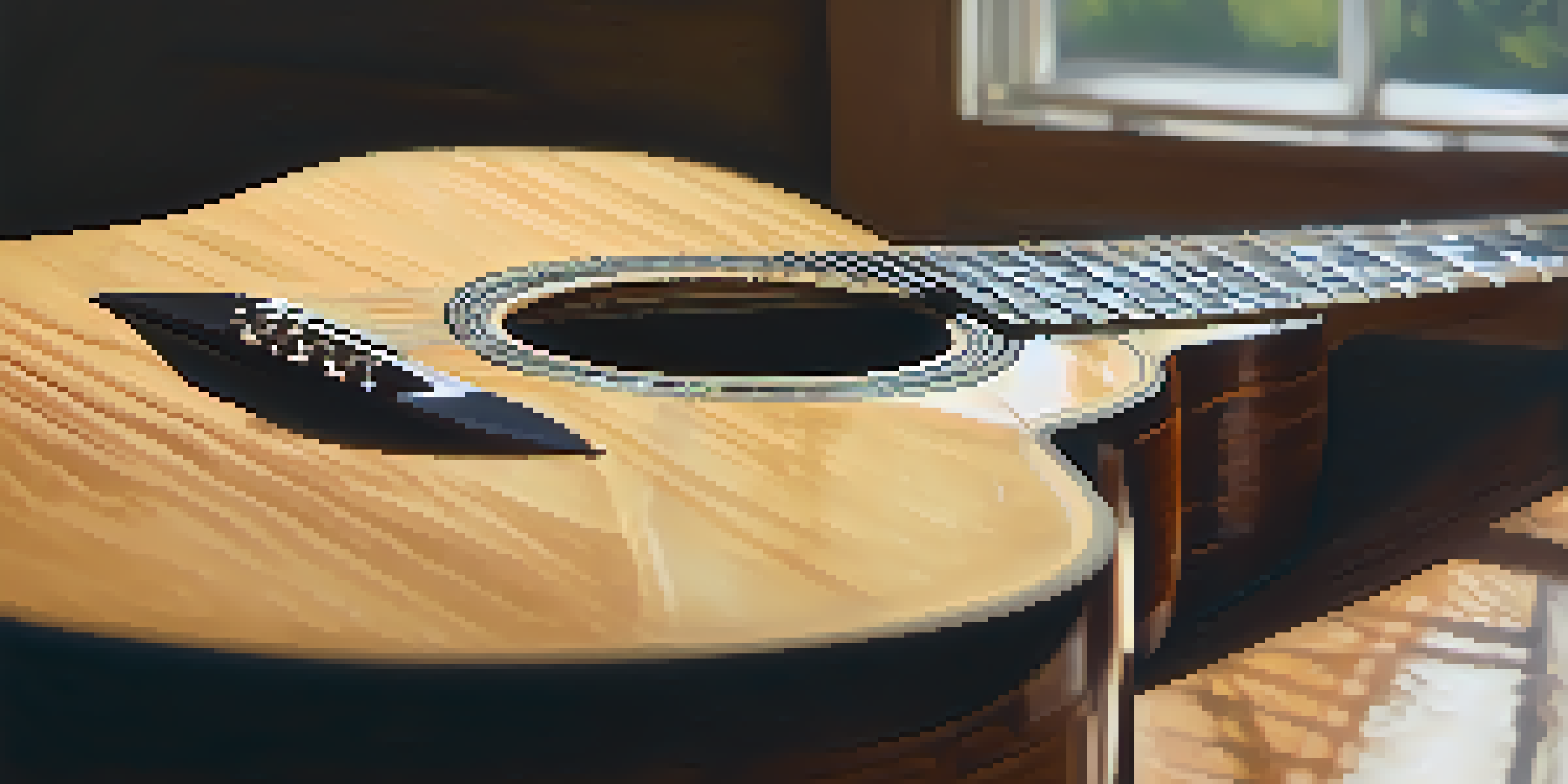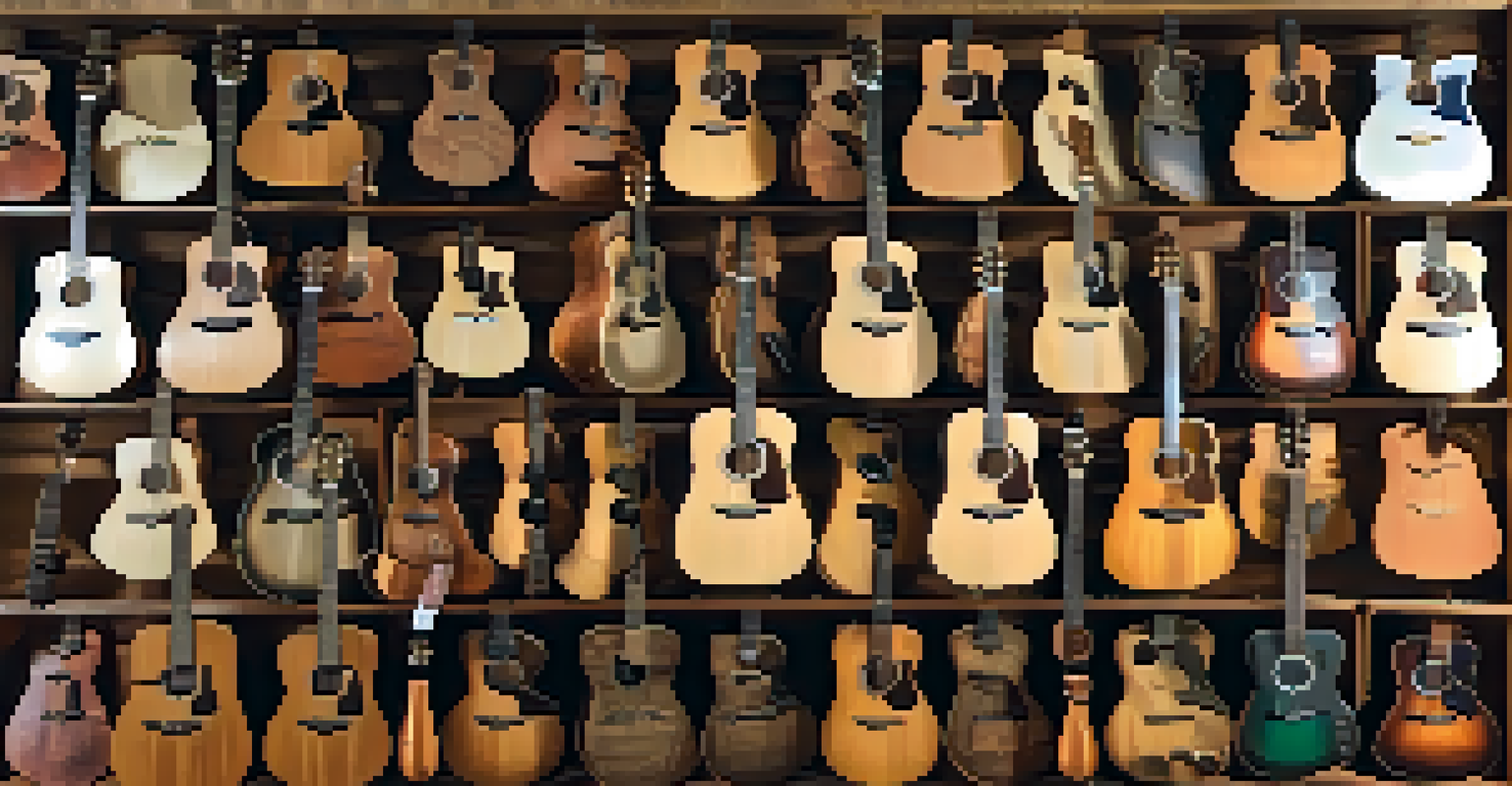Soundboards Explained: The Heart of Live Guitar Sound Setup

What is a Soundboard in Guitar Setup?
A soundboard, often referred to in the context of acoustic guitars, is the flat surface that vibrates to produce sound. It plays a crucial role in amplifying the sound generated by the strings. Think of it as the guitar's voice box, where all the magic happens and the music comes alive.
The guitar is a small orchestra. It is a great easy instrument to play, but it is a difficult instrument to master.
In addition to its structural role, the soundboard's material significantly impacts the tonal quality of the guitar. For instance, spruce is commonly used for its resonant qualities, while mahogany offers a warmer tone. This choice can affect everything from volume to the richness of the sound you hear.
Understanding the soundboard is essential for musicians looking to enhance their live performance. It's not just about playing the notes; the quality of sound produced is influenced heavily by this integral component.
Types of Soundboards and Their Functions
There are various types of soundboards, each designed for specific sound characteristics. For example, a solid wood soundboard tends to provide greater resonance compared to a laminate one. This distinction can drastically change the way a guitar sounds both in practice and during a live performance.

Some soundboards even incorporate technologies like pickups and microphones for amplification, allowing for a seamless transition from acoustic to electric sound. This versatility means that musicians can experiment with different styles without needing multiple instruments.
Soundboard Shapes Guitar's Sound
The soundboard is crucial in amplifying the sound produced by the strings, significantly influencing tonal quality and performance.
By understanding the different types of soundboards, guitarists can make informed decisions when selecting their instruments. This knowledge empowers them to choose a soundboard that matches their musical style and performance needs.
The Role of Soundboard in Live Performances
During live performances, the soundboard's role becomes even more critical. It not only influences how the guitar sounds but also how it interacts with the rest of the band's sound. A well-constructed soundboard helps in achieving a balanced mix, making sure that each instrument shines.
Music is the shorthand of emotion.
Furthermore, the environment where a performance takes place can affect the soundboard's effectiveness. For instance, playing in a large venue may require different sound adjustments compared to an intimate setting. Musicians often need to adapt their setups to ensure their sound projects well.
Ultimately, the soundboard serves as the heart of a guitar setup, particularly in live scenarios. Understanding its impact allows musicians to optimize their sound and connect better with their audience.
Choosing the Right Soundboard for Your Guitar
Selecting the right soundboard requires careful consideration of your playing style and musical preferences. If you favor bright, articulate sounds, a spruce soundboard might be your best bet. Conversely, if you’re after a warm, mellow tone, you might lean towards cedar or mahogany.
It’s also beneficial to test various guitars in person. Each soundboard will respond differently based on the player's touch and style. This hands-on approach ensures that you find a guitar that feels right and sounds great for your performances.
Choosing Soundboards for Style
Selecting the right soundboard based on playing style enhances a guitarist's musical experience and performance outcome.
Remember, the soundboard is just one part of the guitar, but it plays a significant role in your overall sound. Taking the time to choose wisely can vastly enhance your musical experience.
Maintaining Your Guitar's Soundboard
Taking care of your guitar's soundboard is essential for preserving its tonal quality. Regular cleaning and proper humidity levels can prevent warping and cracking, ensuring that your soundboard remains in top condition. A simple wipe down after each use can go a long way.
Additionally, be aware of environmental factors such as temperature and moisture. Extreme conditions can lead to deterioration of the wood. Using a guitar case that provides some insulation against these elements can help protect your instrument.
By maintaining the soundboard, you not only extend the life of your guitar but also keep your sound consistent. This attention to detail can make all the difference in live performances.
The Connection Between Soundboard and Amplification
In live setups, soundboards often work in tandem with amplification systems. The way a soundboard interacts with microphones or pickups can significantly affect the final output. This synergy is what can make an acoustic performance feel electric.
Understanding how to position microphones or pickups relative to the soundboard can enhance sound capture. For example, placing a microphone near the soundhole can yield a rich, full sound, while positioning it closer to the bridge may produce a sharper tone.
Innovations Enhance Soundboard Tech
Recent advancements in soundboard materials and technology provide musicians with improved sound quality and creative possibilities.
This relationship emphasizes the importance of experimentation. Musicians should test different setups to discover the best way to amplify their unique sound, creating a more engaging live experience.
Innovations in Soundboard Technology
Recent advancements in soundboard technology have introduced new materials and designs that enhance sound quality further. Some manufacturers are experimenting with composite materials that offer durability without sacrificing tonal quality. These innovations provide musicians with more options than ever before.
Additionally, the integration of digital technology allows for real-time sound adjustments during performances. This capability means that musicians can adapt their sound on the fly, responding to the acoustics of different venues.

These innovations not only improve the sound quality but also expand the creative possibilities for musicians. Embracing these changes can lead to fresh sounds and innovative performances.